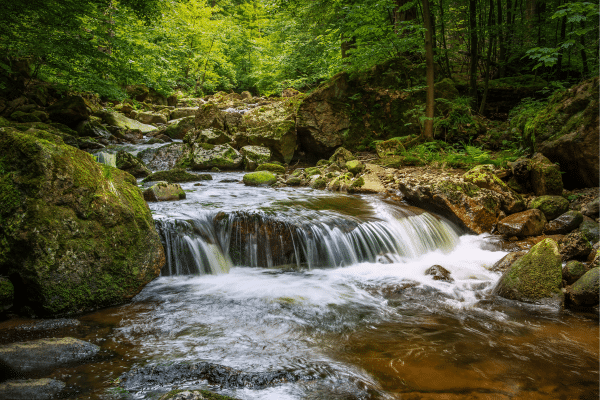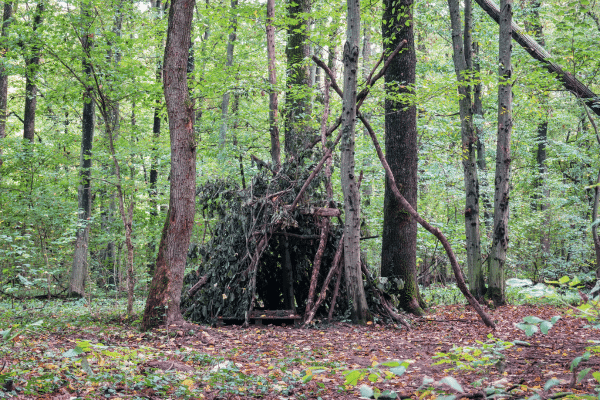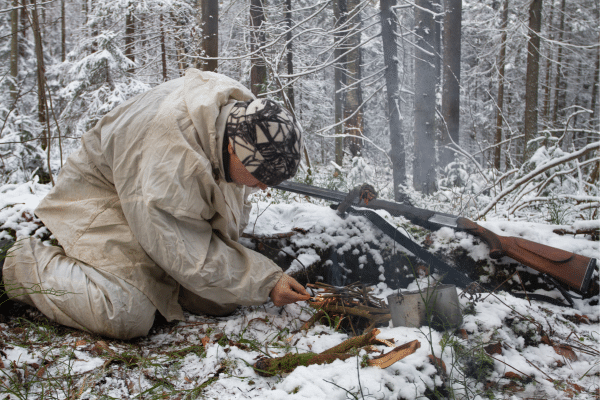Surviving a night in the woods demands more than sheer willpower; it requires practical knowledge and preparedness. Understanding how to secure water, shelter, and warmth is crucial in such a scenario. This guide delves into the essential survival skills needed for an unplanned stay in the wilderness. From locating a water source to building a shelter and making a fire, each step is pivotal in ensuring safety and increasing the chances of making it through the night unscathed.
Contents
Locate The Nearest Source Of Water

Securing a water source is paramount in survival situations. Dehydration can set in quickly in the wilderness, affecting cognitive and physical abilities. Searching for water should be a priority, focusing on signs like vegetation patterns, terrain contours, and animal tracks that may lead to streams or lakes. Once a water source is found, it must be treated before consumption to avoid waterborne illnesses, which can exacerbate survival challenges.
Water purification is a critical step after locating a source. Boiling water is one of the most effective methods to kill pathogens, but if fire or a pot is not available, alternative methods like water purification tablets, filters, or solar distillation can be used. It’s essential to understand these techniques before venturing into the woods, as they can make the difference between life and death.
Build A Shelter

Finding shelter is crucial to protect against the elements and maintain body temperature. The shelter should be situated in a safe location, away from potential hazards like falling branches or flash flood areas. Utilizing natural structures, such as caves or overhangs, can save energy and time. If natural shelters are not available, knowledge of constructing a makeshift shelter using branches, leaves, and other available materials becomes invaluable.
Constructing a shelter requires understanding of basic techniques and the environment. The design should be simple yet effective, ensuring insulation and protection from wind, rain, and cold. The shelter doesn’t need to be large but should be enough to fit the body snugly, retaining heat and providing a safe place to rest. Time and energy management is crucial, as building a shelter can be exhausting and should be completed before nightfall.
Make A Fire

Securing warmth and light during the night in the woods is crucial, and building a fire is the key. Gathering dry materials like twigs, leaves, and branches is the first step, ensuring they are dry enough to catch a spark. Creating a small pit surrounded by rocks can help contain the fire and prevent it from spreading. Techniques like the teepee or log cabin style help in structuring the fire for better airflow and sustainability.
Once the structure is in place, igniting the fire requires a spark, which can be generated using matches, a lighter, or a fire starter. Careful attention must be paid to nurturing the initial flame by gently adding smaller pieces of kindling and blowing softly to provide oxygen. The fire must be monitored constantly to keep it alive and controlled, adding larger pieces of wood gradually to maintain a steady burn. The fire not only provides warmth but also serves as a signal for help and a means to cook food.
Find Food

Survival in the woods often hinges on the ability to find sustenance. Knowledge of local flora and fauna can turn the surrounding environment into a valuable food source. Edible plants, nuts, and berries can provide necessary nutrients, but it is vital to know which are safe to consume to avoid poisoning. Insects, though not appealing to everyone, are often abundant and rich in protein.
For those with the skills, setting up traps or fishing can yield more substantial meals. Simple snares or deadfalls can catch small animals like rabbits or squirrels. Fishing, if near a water source, can be attempted with makeshift lines or spears. These methods require patience and understanding of animal behavior and habitats. Successful foraging and hunting can significantly increase the chances of survival and maintain strength and health in the wilderness.

Orientation in the wilderness is essential for finding the way out or reaching a safe location. Natural navigation, using the sun’s position during the day and stars at night, can guide one in the right direction. Recognizing landmarks and changes in terrain can also assist in maintaining a consistent course and avoiding circles.
For those equipped with a map and compass, understanding how to use these tools effectively can be lifesaving. A map provides a broader view of the area, showing possible water sources, trails, and clearings that can be used for rescue signals. The compass helps in maintaining a straight path, especially in dense forests or during the night. Mastery of these navigation skills ensures that one can find a way to safety or a better shelter location.
Stay Safe From Wildlife

Encounters with wildlife are common in the woods, and knowing how to coexist safely with them is crucial. Most animals avoid human interaction, so making noise often keeps them at bay. However, attracting predatory animals or disturbing dangerous creatures must be avoided. Food storage and waste disposal play a significant role in preventing unwanted wildlife encounters, as odors can attract them from great distances.
Creating a safe sleeping area away from animal paths and food sources minimizes the risk of encounters during the night. Using natural barriers or making a raised platform can deter many ground animals. In case of an encounter, remaining calm and slowly backing away without threatening the animal can prevent aggressive behavior. Understanding and respecting the wildlife ensures a safer experience in their habitat.
Signal For Help

In a survival situation, being rescued is the primary goal, and signaling for help is a critical skill. Visual signals like fires, brightly colored fabrics, or large symbols made in open areas can attract the attention of rescuers from the air. Reflective objects like mirrors or metal can be used to create flashes of light, signaling one’s presence to distant search parties.
Audible signals are equally important, especially in dense forests or at night. Whistles, shouting, or banging objects together can carry over long distances and alert rescuers. Consistency in signaling, like three blasts of a whistle or three fires in a triangle, is a universally recognized distress signal. Ensuring these signals are visible or audible from afar increases the chances of being found and rescued.
The Bottom Line
Surviving a night in the woods requires a combination of knowledge, skills, and mental preparedness. Each action taken, from finding water and building shelter to making a fire and signaling for help, contributes to the overall chances of survival. Practicing these skills in a controlled environment can prepare one for unexpected situations. The wilderness demands respect, and understanding its challenges enables individuals to face them effectively. In the end, survival is not just about enduring the night but doing so safely and efficiently.


